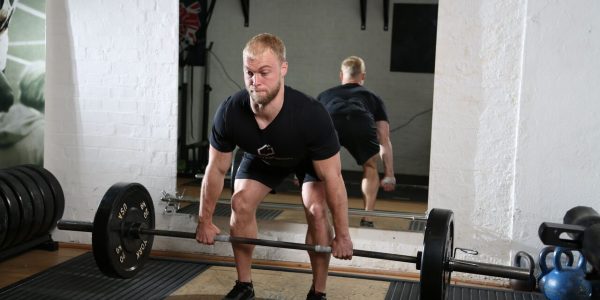Guest article for Iron Life – link to site HERE
Tom Hamilton was the World Drug Free Powerlifting Federation champion in 2016, with a 665kg total in the 82.5kg weight category. He works out of W10 Performance in London
It’s easy to get caught up in throwing new movements into your programme for the ‘wow’ factor. Bands and chains and movement variations all have their place, but often, you can get some of your best results from some of the simplest movements possible. In my experience, some of the most underrated movements are paused variations of the biggest powerlifting movements: they’ll tighten up your technique, can strengthen weak spots, and provide variation in your training. Here’s how I use them.
Deadlifts
Lower back positioning in the deadlift is a fine line, because when you’re edging towards a maximal load most people are going to have some degree of flexion, but if you’re nowhere near your max then you know it’s a technical issue – and the paused deadlift, the most under-used variation – can fix it. Paused deadlifts are really good if you find yourself pulling excessively through the lower back, so that your hips shoot up first. The paused deadlift helps to reinforce good position of the lower back, so you don’t go straight into flexion as you lift.
It’s a simple enough movement to do: squeeze the bar off the floor, pause for two seconds, finish the lift and then lower the bar. I’d suggest doing it for quite low reps: I’d typically programme between 4-6 reps, because it’s quite taxing on the grip. You’d be looking at working between 65-75% of your regular deadlift max. They can be quite brutal, in that quite a few sets can be tough on the body. If you’ve got the ability to deadlift twice a week, I’d say aim for one day of technique work – where you’d include paused deadlifts – and then do one heavy day. Give it a try.
Squats
Everyone’s given these a try – and then usually abandoned them, because they force you to use less weight than you’re used to, and also they can be pretty unpleasant. But stick with them: like the paused deadlift, a solid paused squat will help you to learn control and get a feel for positioning and learn tension. Depending on how you structure your training you could use it as the same day as the squat or a separate day. As with the deadlift, I’d use around 65-75% of your max, either as an assistance movement or a main move.
Bench
Where to pause during your bench press depends on where you struggle. Using paused competition-style bench presses will have benefits for most people, even if they don’t compete – they’ll teach you to generate tension and power from the bottom of the movement. Alternatively, another movement that I like – though I don’t use it much myself, is the Spoto press, in which you pause the bar an inch or two off your chest at the bottom of a rep before reversing the motion. It’s about keeping tightness: if you lose that tightness at the bottom of the press feel your shoulders slouching, you’re just leak power then, so anything that encourages you to keep tight and locked in will help. One warmup I like is putting a band around your wrists as you lie on the bench, pushing outward against the band as if you’re trying to rip it apart, and then ‘pulling’ down as if you’re going to lock into the bottom of the bench. Do it before your paused benching, and watch the difference.
Whether you’re at a well-equipped gym or a bare-bones facility, there’s often a case to be made for simplifying your training. Paused training can do that: and it’ll let you fix weaknesses that’ll otherwise hold you back.

Recent Comments